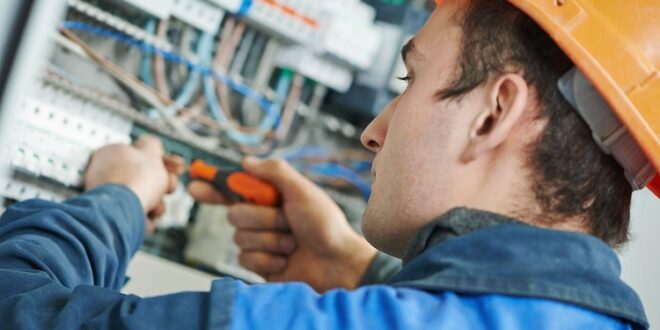Do you own a commercial property? If so, then it’s essential to prepare an electrical maintenance checklist. This will help you keep your building up-to-date and in compliance with the latest safety standards. It also helps prevent fires from occurring due to faulty wiring or other electrical problems.
We have put together all of the information you need to assemble an electrical maintenance checklist that covers everything from testing circuit breakers, inspecting wiring insulation, checking grounding connections, test and tag Melbourne services and more. Its easy-to-use format makes it perfect for anyone who wants their commercial property to be safe and reliable.
The Responsibilities of a Commercial Landlord
As a commercial landlord, you are responsible for maintaining the property in good condition. You must maintain all plant and equipment at the premises (e.g. air conditioning), appliances, fittings and fixtures provided by the landlord under the lease and relating to services such as gas, electricity or water (i.e. power boards, water pipes).
Failure to do so may result in fines from your local council or tenants exercising their right to terminate their lease if these repairs are not carried out promptly.
The landlord is not responsible for maintenance if the tenant misuses any electrical item or is required by the lease to remove them when their lease expires.
What Should be Included in Your Electrical Maintenance Checklist?
We’ve created a checklist for all the things that need to be checked and done regularly. This will ensure that your property stays up-to-date with safety standards, which can save you money in the long run. It also ensures that you are meeting regulations set by law.
The following is a list of items that should be included on your checklist for commercial properties. You’ll want to have these items on hand before beginning any work on the property, as well as during regular inspections throughout the year.
- Check all outlets and switches for loose connections or damage
- Check if there are any exposed wires where they shouldn’t be
- Make sure all light fixtures are securely fastened in place
- Inspect fluorescent lights for cracks or leaks at joints between tubes and sockets
- Test emergency lighting by turning off the power supply and looking for illuminated exit signs (or turn them off one at a time)
- Ensure the fire alarm system is operational by testing each zone individually with battery backup installed; test smoke alarms every six months by pushing the button down hard until the alarm sounds twice; replace batteries once per year when clocks change over to daylight saving time (spring forward/fall back).
- Inspect heating systems annually, including checking gas piping, valves, regulators, pressure gauges, burners and pilot lights; inspect cooling systems annually, including checking refrigerant levels in air conditioner units; check water pumps periodically for wear or leaks
- Ensure all renewable energy sources like solar panels are properly inspected, cleaned and maintained
Once you have established the individual electrical items that will require maintenance, it is time to put together a schedule to be correctly inspected, repaired and compliant. The following are the steps that should be taken when creating an electrical maintenance checklist.
- Determine what needs to be done and who will do it.
- Create a list of tasks with due dates for completion.
- Ensure all equipment is in good working order before starting any work, including power and hand tools.
- Clean up after completing each task by taking care of any messes made during the job or putting away anything used (e.g., saws, hammers).
- Check off completed tasks as they’re finished so you can easily see what’s left to do at a glance without having to go through everything again later on when it’s time for another checkup or inspection.
- Review your checklist periodically – every few months would be ideal – and update it if necessary based on changes in company policies, new regulations from governing bodies like OSHA, etc., or changes in equipment use patterns (e.g., more frequent inspections because of increased production volume).
This checklist is designed to help you prepare an electrical maintenance plan that will ensure the safety and reliability of your electrical system. It should include all the steps necessary for routine inspections, preventive maintenance, and repairs. You can use it as a guide or customise it to meet your needs.
 HammBurg Be informed with latest news, reviews, entertainment, lifestyle tips, and much more.
HammBurg Be informed with latest news, reviews, entertainment, lifestyle tips, and much more.




